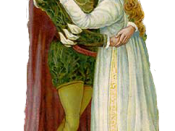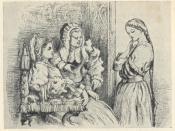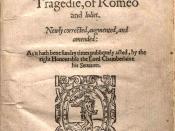In comparing the play "Romeo and Juliet" by William Shakespeare (1596), with its' film appropriation "West Side Story" directed by Robert Wise (1961), it is evident that the portrayed values have been maintained or changed as a consequence of the time the texts were created in. The vastly different contextual eras predominantly generate altered values towards social and cultural issues such as patriarchy, marriage and family, whilst other ideologies such as the power and nature of love remain valued in both contexts. Subsequently the relationship between the two texts and their respective cultural context is significant and exemplified by the principles they portray.
The paradigmatic value of the power of love and its' amoral nature is reflected in both "Romeo and Juliet" and "West Side Story", although the settings change from 16th century Verona to 20th century New York respectively. In Shakespeare's play, Romeo is in love before speaking to Juliet, ("Did my heart love till now? Forswear it 'sight!" - act I scene V line 49).
Accordingly, in the appropriation, the blurring and soft focus utilised in the appropriation when Maria and Tony see each other distinctly illustrates the values that true love occurs instantaneously. Additionally both texts portray that despite the social boundaries that exist for lovers, their love comes foremost ("I'll no longer be a Capulet" - Juliet - Act 2, Scene 2, "[love] so strong, there is no right or wrong" - Maria - "I Have A Love") and serves as the pivot for overturning the civil conflict in the community, portraying that true love knows no impediments. The popularity and acceptance of the texts illustrates that the relationship between the lovers stands as a cultural model that is fostered by the unaltered social ideal and understanding of love in the respective contexts.
The fundamental division...


